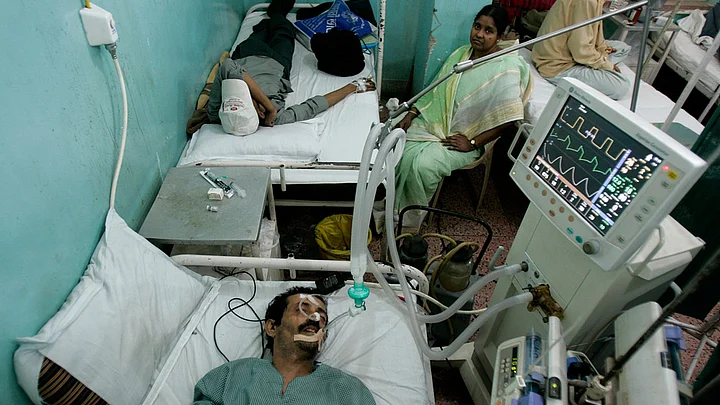A beneficient scheme was launched by Union Health Minister J P Nadda when he inaugurated India’s first pharmacy retail store at the All India Institute of Medical Sciences (AIIMS) that will provide drugs for cancer and cardiovascular diseases at a 60 to 90 per cent discount on prevailing market rates.
The pharmacy which will be branded AMRIT (Affordable Medicines and Reliable Implants for Treatment), will also provide cardiac implants that will be sold at 50 to 60 per cent discount.
The reason this is a good move is simply because of the size of the addressable market. There are about 2.8 million people who suffer from cancer at any point of time in India. With 700,000 new cancer cases diagnosed every year and half-a-million deaths a year, India has a sizeable population of cancer patients.
Unaffordability of Drugs
Around 145,000 breast cancer cases are diagnosed every year. One of the reasons for higher death rate is late discovery of the disease. But over 50 per cent deaths, as per government records, are because of unaffordability of drugs.
Cardiovascular-related ailments are the biggest killers in India. About 25 per cent of deaths in the 25-69 age group are on account of heart diseases. Urban deaths are in the range of 32.8 per cent while in rural areas it is 22.9 per cent.
According to government data, the prevalence of heart failure in India due to coronary heart diseases, hypertension, obesity, diabetes and rheumatic heart diseases ranges around 4.6 million with nearly 2.4 million deaths a year. Here again the high cost of treatment results in a large number of deaths.
It’s Cheaper to Die Than Get Treated
Even though India allows cheaper alternatives for life-saving patented drugs, the cost of treatment is beyond the reach of the common man. Treatment cost runs as high as Rs 1 lakh a cycle for a cancer patient undergoing chemotherapy. This treatment can run for months.
Some breast cancer patients need targeted treatment with drugs costing around Rs 75,000 per course. Such patients need around 17 courses during the entire period of the treatment.
In a country where a farmer commits suicide for a Rs 10,000 loan, these treatment costs are way beyond his means. He would prefer to die than subject his family to lifelong debt.
Scheme is a Life Saver
To start with, the government has opened the pilot project at AIIMS, Delhi, but intends to expand it to other central government hospitals. Under the scheme, 195 oncology drugs, 186 cardiovascular drugs and 148 cardiac implants will be sold through AMRIT pharmacy.
Some of the critical medicines have been priced very low, especially Docetaxel 120 mg injections which are available in the market for Rs 13,440 for one cycle and will be sold for Rs 888.75, at 93 per cent discount.
Long Way To Go
But drug prices are only one part of the solution. There are other costs involved in treatment of the disease. Physician charges, hospital costs and other expenses on medical tests result in drug cost being a portion of the overall treatment cost.
Further, both the diseases are not covered by most insurance companies, or covered with so many caveats that it is almost impossible to make a medical claim for the treatment. Treatment of these diseases is a big burden for most of the middle class.
Middle class Indians generally prefer to stay away from government hospitals, at least for hospitalisation and surgeries because of the appalling conditions in most such facilities. Further, not every government hospital is equipped to treat these diseases, which means that even the poor are forced to go to private hospitals for treatment.
AMRIT has the potential of being a big success story. But it needs to be rolled out by creating an efficient infrastructure for delivery.
Apart from much-needed infrastructure there are other issues which need to be tackled. Doctors, especially those in private practice, have been seen prescribing and insisting costlier treatments rather than the cheaper ones introduced by the government. The government will also have to take steps to discourage such practices.
(The writer is a Mumbai-based market analyst)
